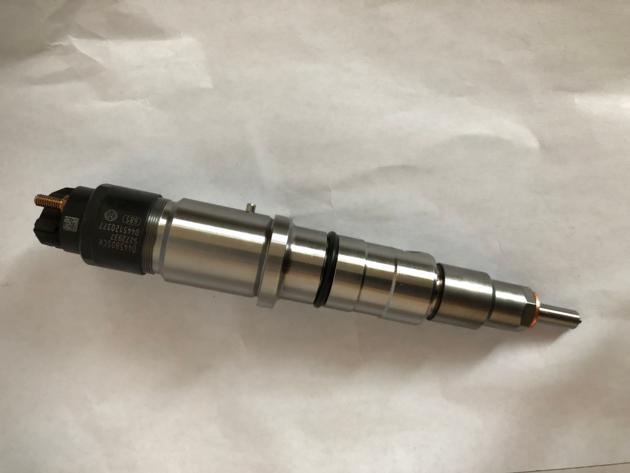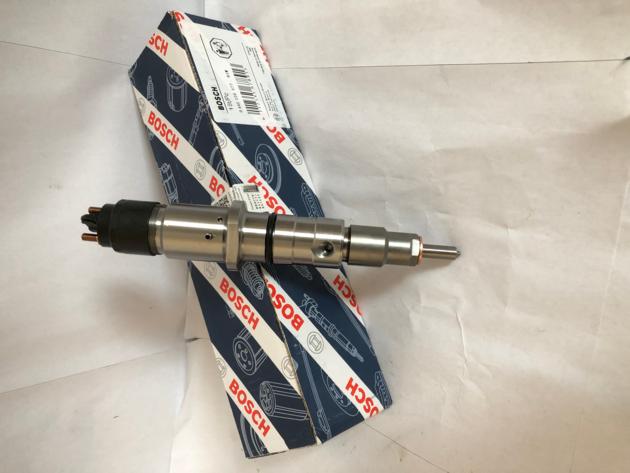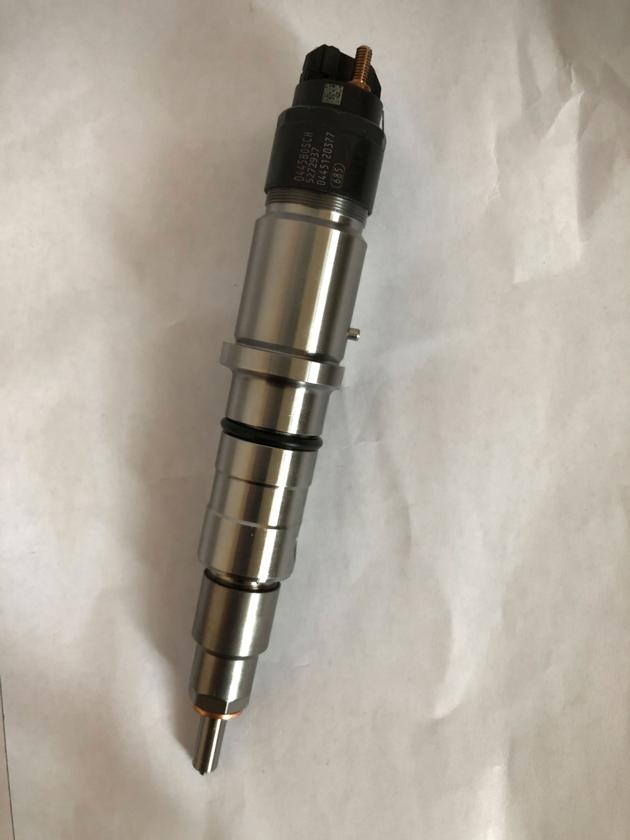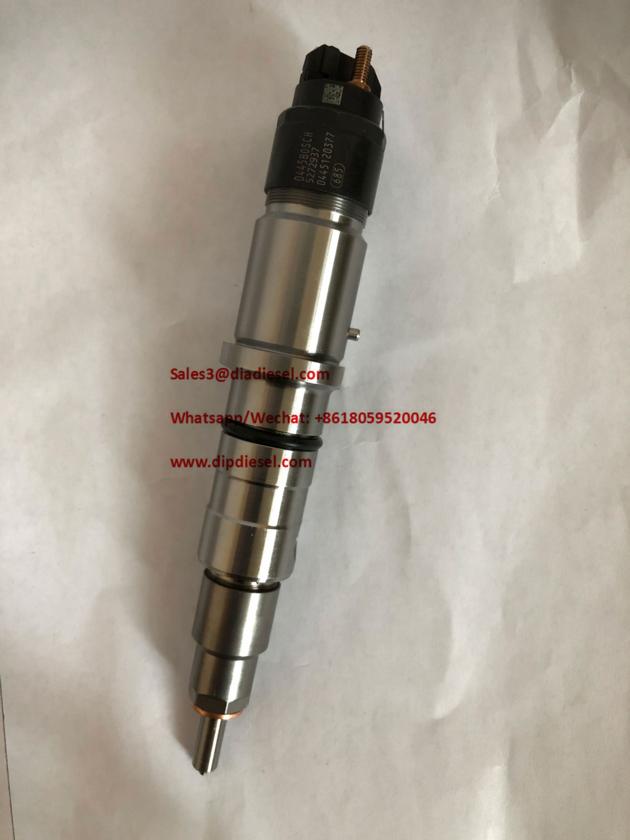Advertisements



Common Rail Diesel Injector 0445120377 530780 bosch diesel injector nozzle catalogCummins ISL
| Price: | US$ 110 |
|---|---|
| Minimum Order: | 12pcs |
| Payment Terms: | Westen Union |
| Port of Export: | Xiamen |
Product Details
| Model No.: | 0445120377 530780 | Brand Name: | CNDIP |
|---|
| Certification: | |
|---|---|
| Specification: |
The merits of the common rail fuel injection system architecture have been recognized since the development of the diesel engine. Early researchers, including Rudolf Diesel, worked with fuel systems that contained some of the essential features of modern common rail diesel fuel injection systems. For example, in 1913, a patent for a common rail fuel injection system with mechanically actuated injectors was issued to Vickers Ltd. of Great Britain [McKechnie 1913]. Around the same time, another patent was issued in the United States to Thomas Gaff for a fuel system for a direct cylinder injection spark ignition engine using electrically actuated solenoid valves. The fuel was metered by controlling the length of time the valves were open [Gaff 1913]. The idea of using an electrically actuated injection valve on a diesel engine with a common rail fuel system was developed by Brooks Walker and Harry Kennedy in the late 1920s and applied to a diesel engine by Atlas-Imperial Diesel Engine Company of California in the early 1930s [Walker 1933][Burman 1962][Knecht 2004][Aird 2001].
Work on modern day common rail fuel injection systems was pioneered in the 1960s by the Societe des Procedes Modernes D’Injection (SOPROMI) [Huber 1969]. However, it would still take 2-3 decades before regulatory pressure would spur further development and the technology would mature to be commercially viable. The SOPROMI technology was evaluated by CAV Ltd. in the early 1970s and was found to provide little benefit over existing P-L-N systems in use at the time. Considerable work was still required to improve the precision and capability of solenoid actuators. Further development of diesel common rail systems began in earnest in the 1980s. By 1985, Industrieverband Fahrzeugbau (IFA) of the former East Germany developed a common rail injection system for their W50 truck, but the prototype never entered series production and the project was abandoned a couple of years later [Sachsisches Industriemuseum 2010]. Around the same time, General Motors was also developing a common rail system for application to their light-duty IDI engines [Williams 1982]. However, with the cancellation of their light-duty diesel program in the mid-1980s, further development was stopped. A few years later, in the late 1980s and early 1990s, a number of development projects were initiated by engine OEMs and later taken up by fuel injection equipment manufacturers: Nippondenso further developed a common rail system for commercial vehicles [Miyaki 1988][Miyaki 1991] that they acquired from Renault and that was introduced into production in 1995 in Hino Rising Ranger trucks. In 1993, Bosch—perhaps due to some pressure by Daimler-Benz—acquired the UNIJET technology initially developed by the efforts of Fiat and Elasis (a Fiat subsidiary) for further development and production [Stumpp 1996]. Bosch’s passenger car common rail system was introduced into production in 1997 for the 1998 model year Alfa Romeo 156 [Jost 1998] and C-Class Mercedes-Benz. Shortly afterward, Lucas announced common rail contracts with Ford, Renault and Kia with production starting in 2000. In 2003, Fiat introduced a next generation common rail system capable of 3-5 injections/engine cycle for the Multijet Euro 4 engine. Further information on the history of common rail systems can be found in the literature [Knecht 2004][Petruzzelli 2013]. The aim of these development programs started in the late 1980s/early 1990s was to develop a fuel system for the future diesel powered passenger car. Early on in these efforts, it was apparent that future diesel cars would utilize a direct injection combustion system due to the clear advantage in fuel economy and power density relative to the then prevalent indirect injection combustion system. The objectives of the developments included driving comfort comparable to that of gasoline fueled cars, compliance with future emission limits and improved fuel economy. Three groups of fuel system architectures were under consideration: (1) an electronically controlled distributor pump, (2) an electronically controlled unit injector (EUI or pump-nozzle unit) and (3) a common rail (CR) injection system. While the efforts around each of these approaches lead to commercial fuel systems for production vehicles, the common rail system provided a number of advantages and would eventually come to dominate as the primary fuel system used in light-duty vehicles. These advantages included: Fuel pressure independent of engine speed and load conditions. This allows for flexibility in controlling both the fuel injection quantity and injection timing and enables better spray penetration and mixing even at low engine speeds and loads. This feature differentiates the common rail system from other injection systems, where injection pressure increases with engine speed, as illustrated in Figure 1 [Hawley 1998]. This characteristic also allows engines to produce higher torque at low engine speed—especially if a variable geometry turbocharger (VGT) is used. It should be noted that while common rail systems could operate with maximum rail pressure held constant over a wide range of engine speeds and loads, this is rarely done. As is discussed elsewhere, fuel pressure in common rail systems can be controlled as a function of engine speed and load to optimize emissions and performance while ensuring engine durability is not compromised. Common Rail Diesel Injector 0445120377 5307809 for Cummins ISL Welcome to Contact me! |
Packaging & Delivery
| Packaging: | Neutral Packing |
|---|---|
| Delivery/Lead Time: | In 3-4 days after receive payment |
| Production Capacity: | 1000pcs |
Product Description
Common Rail Diesel Injector 0445120377 5307809 for Cummins ISL
Welcome to Contact me!
Our Advantages
1. High quality,Best price.
2. Timely delivery; Within 7 days after confirmation.
3. Stable performance, Safety and stability,Long-standing durability.
4. Warranty: 6 months.
5. Packing customization: Accepted.
about us
DIP (Diesel INJECTION PARTS) PLANTS is a manufacturer specialized in diesel fuel injection parts & components. the product line includes Injection Nozzles, Pump-elements (Plunger Barrel), Delivery Valve, Head Rotor,VE Pump Parts and many other related products. We are manufacturing and assembling the products of superior quality and performance with guaranteed components over 26 years! Our earned a reputation for outstanding customer service, and we continue to be dedicated to achieving excellence that can be depended upon.
Common Rail Diesel Injector 0445120377 5307809 for Cummins ISL
Wechat:+8618059520046




|
SUPPLIER PROFILE
|
|||
|---|---|---|---|
| Company: | DIP (Diesel Injection Parts) PLANTS | ||
| City/State | Putian, Fujian | Country: |
China 
|
| Business Type: | Export - Manufacturer / Trading Company | Established: | NA |
| Member Since: | 2021 | Contact Person | Doris Wei |
SUPPLIER PROFILE
City/State/Country -
Putian, Fujian
China 

Business Type -
Export - Manufacturer / Trading Company
Established -
NA
Member Since -
2021
Contact Person -
Doris Wei



